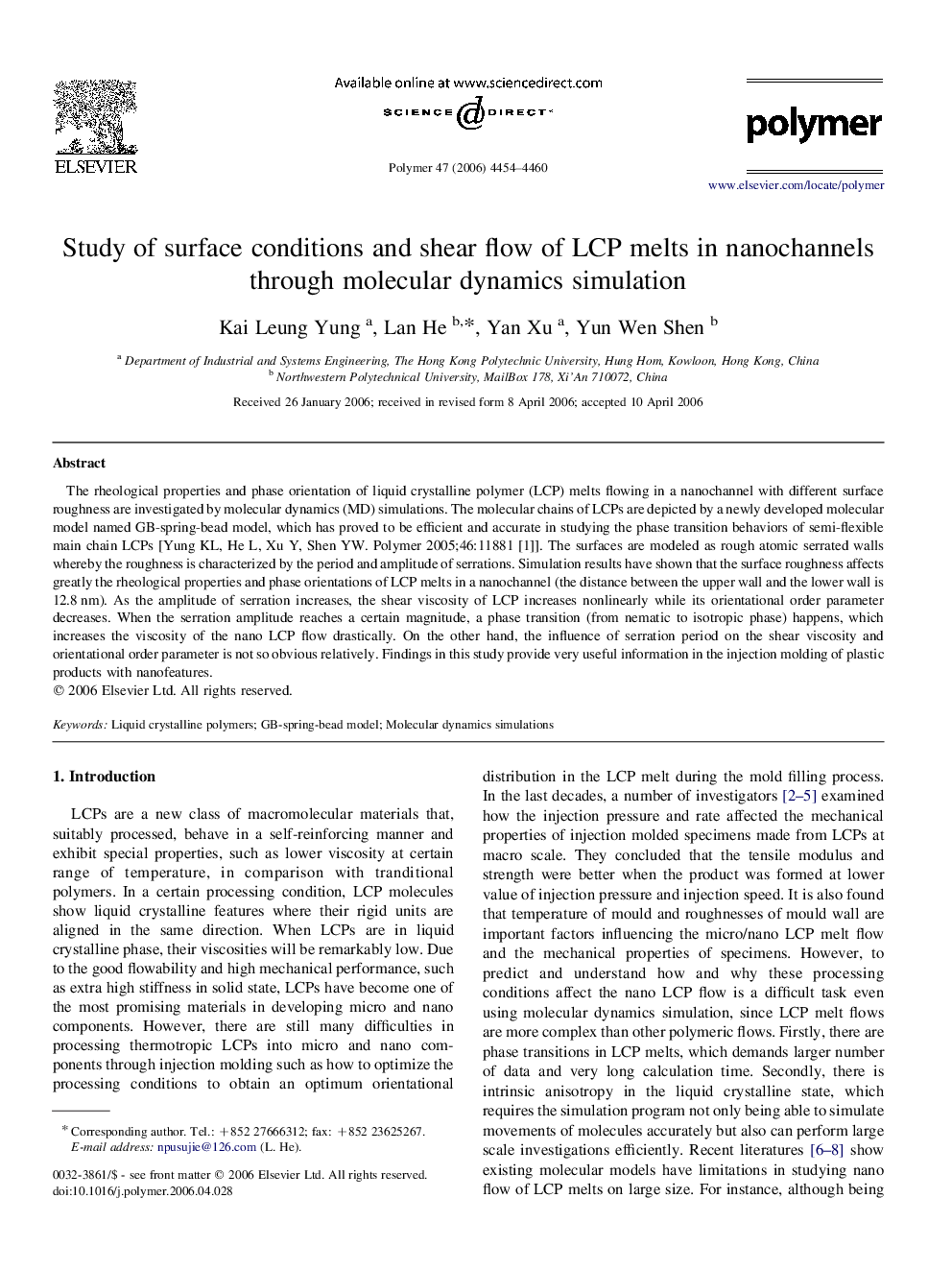| Article ID | Journal | Published Year | Pages | File Type |
|---|---|---|---|---|
| 5189757 | Polymer | 2006 | 7 Pages |
Abstract
The rheological properties and phase orientation of liquid crystalline polymer (LCP) melts flowing in a nanochannel with different surface roughness are investigated by molecular dynamics (MD) simulations. The molecular chains of LCPs are depicted by a newly developed molecular model named GB-spring-bead model, which has proved to be efficient and accurate in studying the phase transition behaviors of semi-flexible main chain LCPs [Yung KL, He L, Xu Y, Shen YW. Polymer 2005;46:11881 [1]]. The surfaces are modeled as rough atomic serrated walls whereby the roughness is characterized by the period and amplitude of serrations. Simulation results have shown that the surface roughness affects greatly the rheological properties and phase orientations of LCP melts in a nanochannel (the distance between the upper wall and the lower wall is 12.8Â nm). As the amplitude of serration increases, the shear viscosity of LCP increases nonlinearly while its orientational order parameter decreases. When the serration amplitude reaches a certain magnitude, a phase transition (from nematic to isotropic phase) happens, which increases the viscosity of the nano LCP flow drastically. On the other hand, the influence of serration period on the shear viscosity and orientational order parameter is not so obvious relatively. Findings in this study provide very useful information in the injection molding of plastic products with nanofeatures.
Related Topics
Physical Sciences and Engineering
Chemistry
Organic Chemistry
Authors
Kai Leung Yung, Lan He, Yan Xu, Yun Wen Shen,
